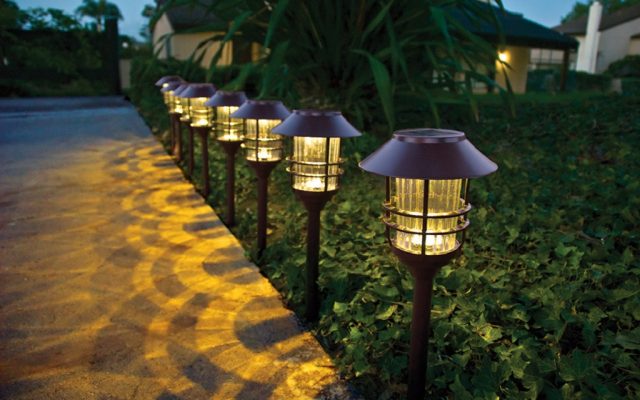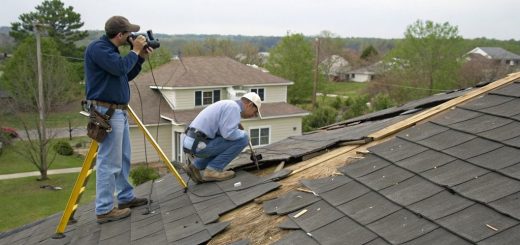Buyer’s Guide – Outside Lighting
Outside Lighting
Lighting the exterior of your home adds value and safety to your property. A well planned and executed design is the key to improving functionality and appearance. I recommend working on either the back or the front first, rather than attempting to do both at the same time. It may seem easy to hang and install lights, but if you want it to be as successful as possible, do one at a time.
Backyard
The design for your backyard must add protection and be attractive. Spend some time reading this article on garden lights for some ideas on lighting your plants. For increased security in your yard, add motion detector lights in areas that could be entry points – gates, low fences, sliding doors, and windows. If an intruder can be easily seen, his plans to enter your house will most likely be thwarted. Animals can trigger motion detector lights and cause some false alarms for you and your family. Spend some time adjusting the sensitivity on the sensor to ensure that small critters won’t set it off.

Lighting your patio or deck is what takes backyards from average to spectacular. Draw an overhead view of your patio/deck and make a few copies of it. With a pencil, start sketching where you think lights would be best installed. Consider walkways, BBQ area, doors, stairwells, statues, and water features in your designs. List what you feel are the most important things that need to be lit up, and plan your design around those. I recommend having 2-3 drawings that you think will be good and ask a friend or family member for their opinion. Seeing your design with a fresh set of eyes will spark new ideas and maybe find some things that you may have overlooked.
Once you have decided on a final design, take a look at the overall theme of your backyard to decide what style of lights you want. A clear vision of what you want will help guide your shopping decisions. It’s much better to spend some extra time now, rather than be stuck with lights that you don’t like for years to come!
Every backyard is different, so installation varies from something as simple as hanging lights to complex wiring through pillars. Be realistic in judging your own abilities, and if you are comfortable with the task, DIY! If not, hire help!
Also consider timers if you plan on programming the light to automatically turn on and off, solar systems that power themselves, and low voltage LED (light-emitting diode) lights that use a fraction of the electricity that traditional lights do.
Front Yard
For most people, lighting the front of their house is limited to lights above or around the garage and one by the front door. This cookie-cutter practice is common because of its high functionality. It lights up the entry points around the perimeter of your home, but add little else. If you want your house to be as beautiful as it can, break away from this mold.
Outside lighting has grown well beyond cookie-cutter practices in recent years. Many people are adding lights to trees, walkways or art in their front yard. Follow the same steps outlined in the backyard section to design your front yard plan. Draw an overhead view of your front yard, make copies, and sketch your plans.
Depending on the neighborhood, theft from front yards is common. If you plan on installing something that someone else may want, take extra precautions while installing it to make sure it is secure. It would be heartbreaking to walk out front only to find your family of yard gnomes missing!
A few extra hours in the planning process will help your outdoor lighting project go much smoother. You will end up with a back yard that is as comfortable and inviting as the inside of your home is!














